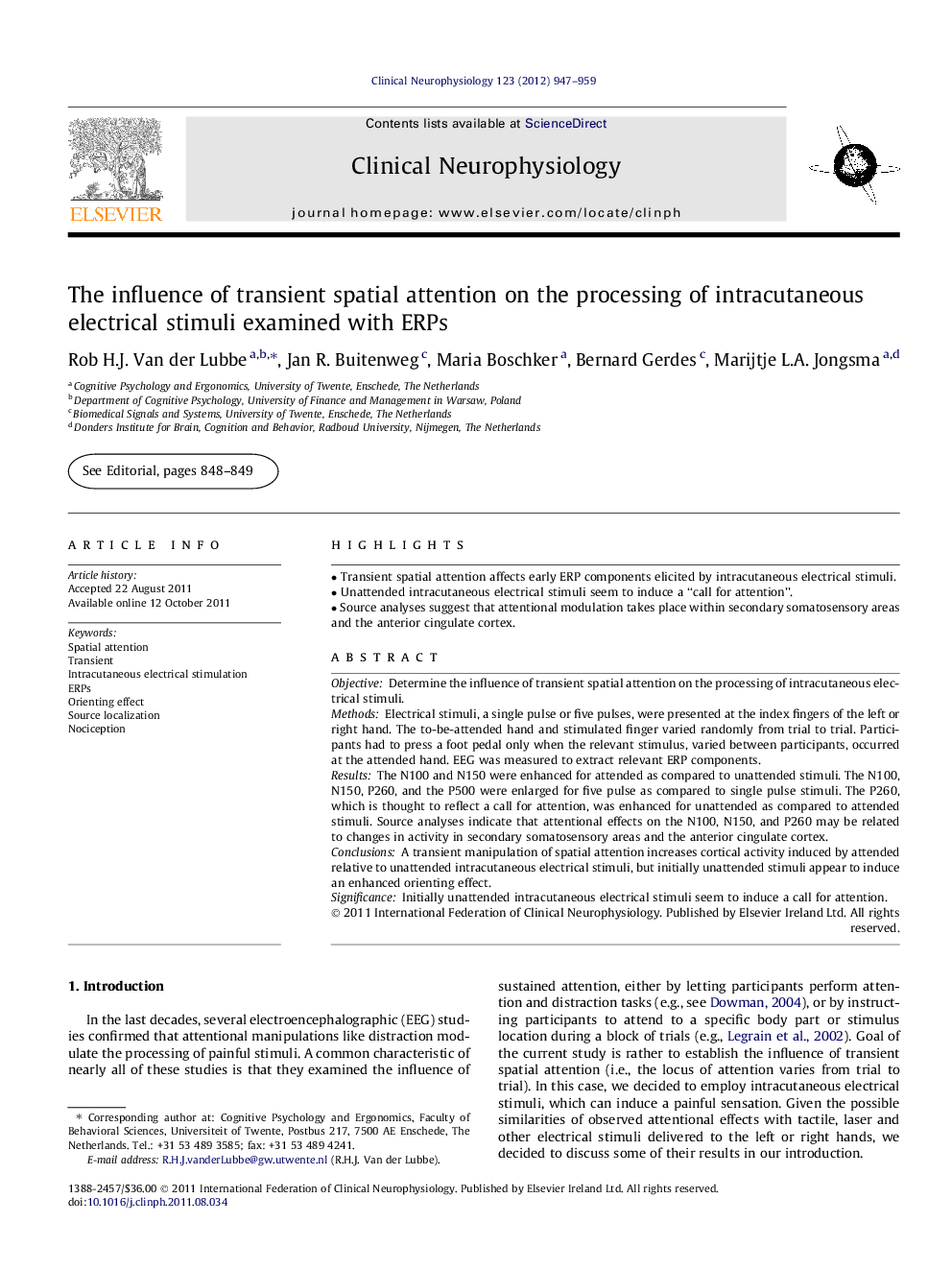| Article ID | Journal | Published Year | Pages | File Type |
|---|---|---|---|---|
| 3045288 | Clinical Neurophysiology | 2012 | 13 Pages |
ObjectiveDetermine the influence of transient spatial attention on the processing of intracutaneous electrical stimuli.MethodsElectrical stimuli, a single pulse or five pulses, were presented at the index fingers of the left or right hand. The to-be-attended hand and stimulated finger varied randomly from trial to trial. Participants had to press a foot pedal only when the relevant stimulus, varied between participants, occurred at the attended hand. EEG was measured to extract relevant ERP components.ResultsThe N100 and N150 were enhanced for attended as compared to unattended stimuli. The N100, N150, P260, and the P500 were enlarged for five pulse as compared to single pulse stimuli. The P260, which is thought to reflect a call for attention, was enhanced for unattended as compared to attended stimuli. Source analyses indicate that attentional effects on the N100, N150, and P260 may be related to changes in activity in secondary somatosensory areas and the anterior cingulate cortex.ConclusionsA transient manipulation of spatial attention increases cortical activity induced by attended relative to unattended intracutaneous electrical stimuli, but initially unattended stimuli appear to induce an enhanced orienting effect.SignificanceInitially unattended intracutaneous electrical stimuli seem to induce a call for attention.
► Transient spatial attention affects early ERP components elicited by intracutaneous electrical stimuli. ► Unattended intracutaneous electrical stimuli seem to induce a “call for attention”. ► Source analyses suggest that attentional modulation takes place within secondary somatosensory areas and the anterior cingulate cortex.
